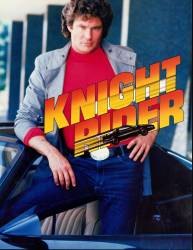Factual error: Realistically, there is no way someone can be thrown straight up from the driver's seat of a Pontiac Trans-Am, even with T-tops. Whoever was being shot straight up would probably break their legs on the crossbar that's adjacent to the windshield.
Factual error: A secret file is password-protected on a computer, requiring a six-digit numerical access code. KITT states that the possibilities "are virtually unlimited." In truth, if each digit can be 0 through 9 (numerical meaning no letters or symbols), the possibility is 1 in 10^6, or 1 in a million. A supercomputer like KITT should have no problem running each number systematically until a correct code is found.
Mouth of the Snake [a.k.a. All That Glitters] (1) - S2-E21
Factual error: The scenes outside the motel in Calexico show a large mountain range in the background. Calexico is actually located at or slightly below sea level. The only mountain in the vicinity is Signal Mountain, which is an individual mountain, not a range. (00:24:30)






Answer: KITT didn't choose to go off the cliff in Goliath Returns, it just happened as he tried to avoid Goliath. Just 'cus it happened, doesn't mean It's gonna cure his fear of "flying"